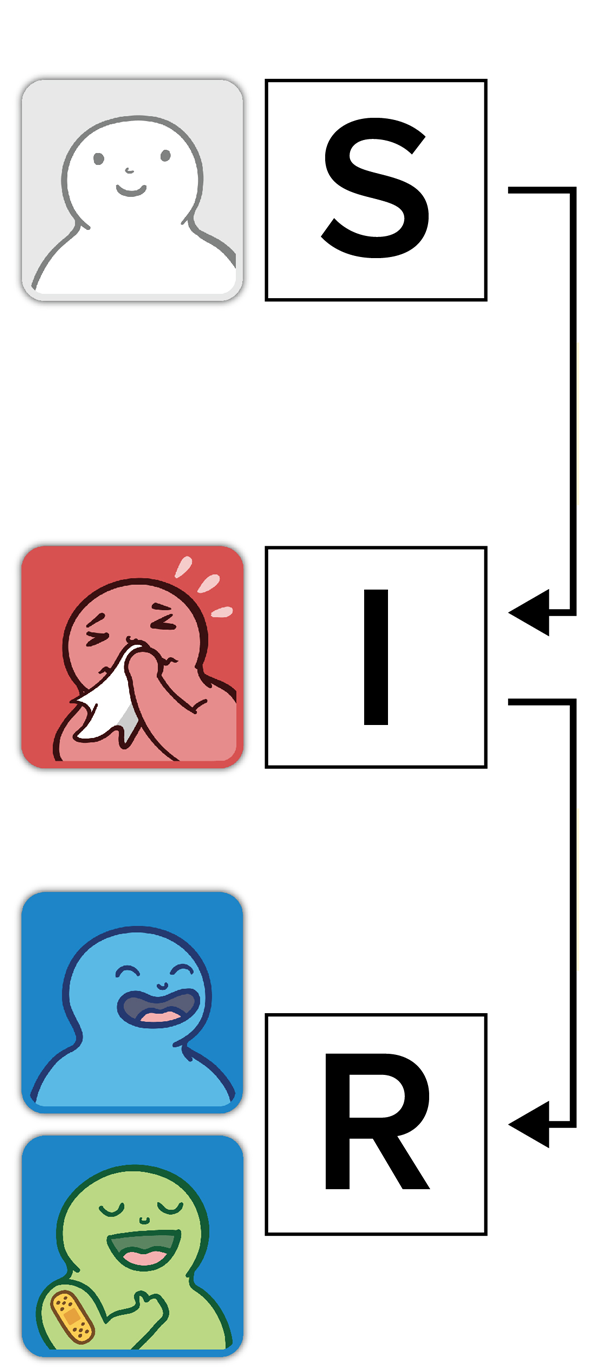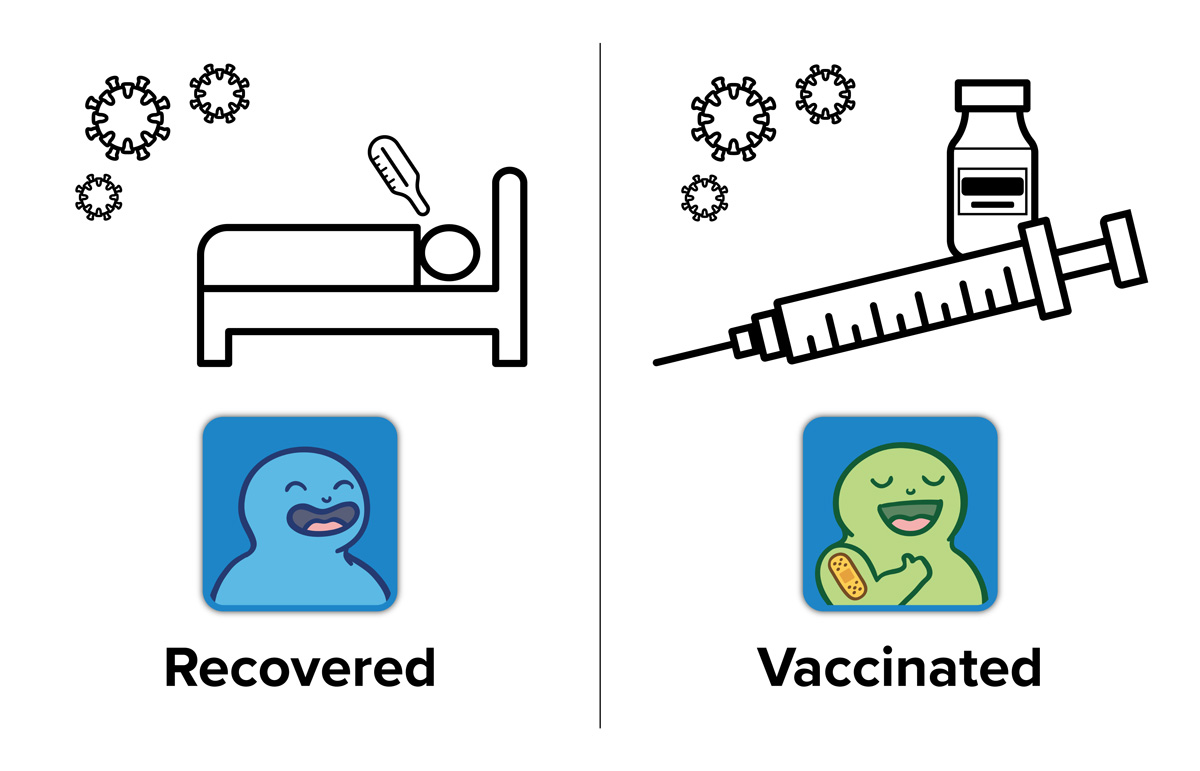SIR Model Basics Background
In this section, you will learn about a common epidemiological model called the SIR model. You’ll then use a simulator based on this model to explore a short disease outbreak in a small population.
Epidemiological models are often built using mathematical modeling: a process that uses mathematical equations to represent a real-world system or scenario. Mathematical models can be used to make predictions, analyze results, and provide insights about real-world problems.
What is an SIR model?
An SIR model simulates the spread of an infectious disease in a population. "SIR” stands for the three main groups in the model: Susceptible, Infectious, and Removed.

Susceptible
Uninfected and unvaccinated individuals who can become infected
Transmission
The process by which susceptible individuals become infected
Infectious
Individuals who are infected with a given pathogen and can pass the pathogen to susceptible individuals
Recovery
The process by which infected individuals recover
Removed
- Individuals who were infected but have recovered, and are now immune (cannot be reinfected)
- Individuals who are vaccinated and are now immune
The SIR model is dynamic, meaning that the number of individuals in each group changes over time. You can use the model to predict the number of susceptible, infectious, and removed individuals in a population at specific timepoints.
Watch this video describing the SIR model.
Removed Group Has Immunity
Individuals in the removed group have immunity against the pathogen, which protects them from becoming infected. They gain immunity after recovering from a previous infection or through vaccination.
Vaccinated individuals have received a vaccine against a specific pathogen. If a vaccinated individual encounters the same pathogen at another time, their body can recognize and destroy the pathogen more quickly than if they had not been vaccinated.

Assumptions in Modeling
All models are based on assumptions: conditions we treat as true, including simplifications we make about the world or system we are studying. Although not all assumptions are true in real life, they can make a model easier to build, understand, and analyze.
Our SIR model makes some assumptions, including:
Three Groups
The population is divided into three distinct groups: susceptible individuals, infectious individuals, and removed individuals.
Population Doesn’t Increase
The total population never increases (e.g., no births or individuals moving into the population).
Transmission
When infectious and susceptible individuals interact, those susceptible individuals (called close contacts) may become infected. Once infected, they are immediately infectious and can spread the pathogen to others.
Population Doesn’t Decrease
The total population never decreases (e.g., no deaths or individuals moving out of the population).
No Reinfection
Once someone recovers, they are immune and cannot become reinfected (they will not reenter the susceptible group).
Equal Number of Contacts
All individuals interact with equal numbers of other individuals.
Not all the assumptions in our SIR model are true of real-world populations. For example, although our model says there are no reinfections, reinfections can occur for real diseases like the flu. Other versions of the SIR model may make different assumptions that more closely mimic the real world.
In the “Tutorial,” you will learn the basic processes that an SIR model uses to simulate daily disease spread, as well as some more assumptions of our model. You will then simulate an infectious disease outbreak in a small population, collect data, and generate a graph.